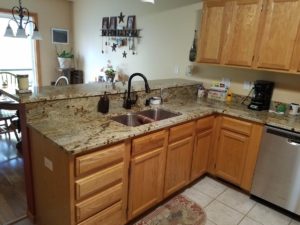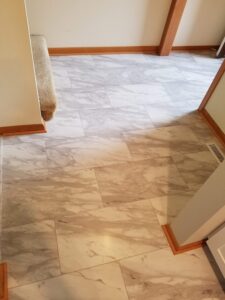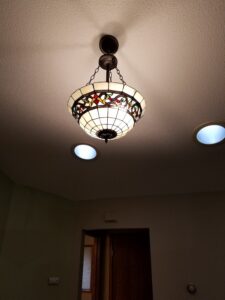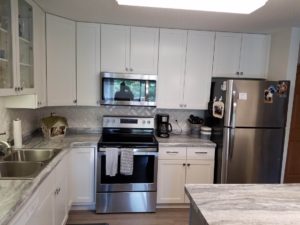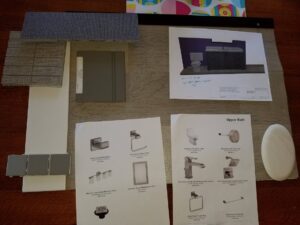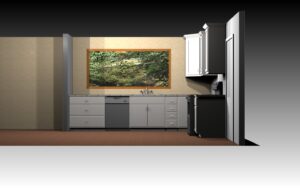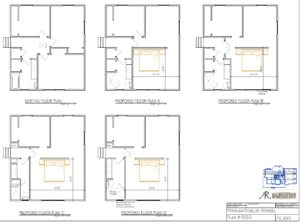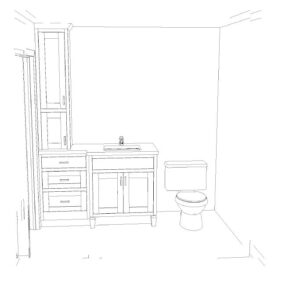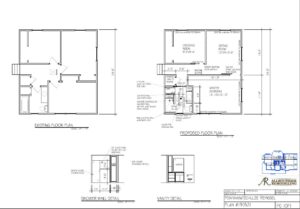LIGHTING DESIGN & CONSIDERATIONS
Our clients often come to us with grand ideas for what they’d like their new kitchen or bath to look like. They will spend many hours researching the perfect cabinet color or countertop finish.
One area that is typically overlooked by our clients is lighting. We want you to be able to see in your new spaces!
In this article, we will cover some of the common lighting types and applications, as well as some additional considerations to keep in mind.
TYPES OF LIGHTING
GENERAL LIGHTING
General Lighting consists of the basic overhead lighting that allows you to not be in a dark room while walking around. Examples include centrally located ceiling light fixtures and recessed lighting that covers the entire room with some level of light. However, general lighting may not be enough to help with specific tasks.
This basement area includes several carefully spaced recessed lights to provide general illumination to the space.

TASK LIGHTING
Task Lighting is installed in areas where additional lighting is needed to complete a task. Examples of this include under-cabinet lighting in kitchens which illuminates countertop work areas, as well as specific fixtures that cast light on the kitchen sink area or stovetop areas. In bathrooms, task lighting is installed over vanities to allow for better lighting while shaving or applying makeup.
Here, our team added task lighting inside of this appliance garage so our clients can easily see while using these appliances.
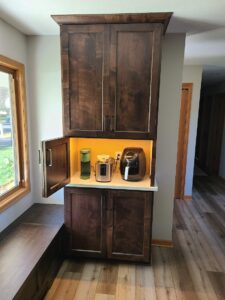
ACCENT LIGHTING
Accent Lighting is added to highlight certain architectural features in the home. An example is in this living area, where recessed lights are strategically placed to highlight the stone on the fireplace and the built-ins that flank it
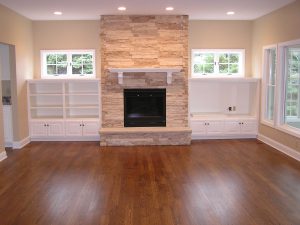
Another example of accent lighting are the carefully placed LED’s in this glass buffet cabinet. The lights cast light on the artwork to highlight it, and the glass shelves allow the light to reach the lower parts of the glass cabinets.

Note that lighting may serve more than one purpose. The undercabinet lighting in this kitchen was designed to not only light up the work surfaces, but also serve as an accent light to highlight the backsplash.
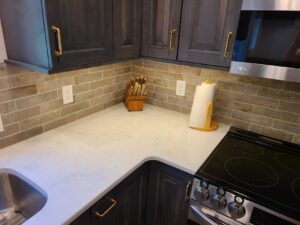
OTHER CONSIDERATIONS
LIGHT LAYERING
In most projects, we will “layer” the different types of light by controlling them with separate switches. As an example, the first layer will likely be the general lighting, followed by separate switches to contrail the task lighting and accent lighting. This allows users to customize the lighting for the situation.
DIMMERS & LIGHTING CONTROLS
Dimmers are a critical component to light layering. Dimmers allow our clients to customize the level of each type of light to reflect their mood and situation. In our own home, we typically keep our lights dimmed low in our living room, but turn them up to full while cleaning and performing other tasks.
Standard Switches are used in situations where dimming isn’t required. Examples include work areas or hallways.
Smart Lighting is becoming more popular. These systems integrate with Apple or Alexa products, allowing our clients to set up different scenes or light choices depending on the time of day. As an example, one of our clients has a “time for bed” scene that shuts off all of the lights except for a dim undercabinet light which is used as a nightlight.
COLOR TEMPERATURE
Color Temperature plays a role in how your finished spaces look. Light bulbs and fixtures give off a certain “color” of light. This light is measured on a scale that typically ranges from 2500k through 7000k. The lower end of the scale is considered “warm” and the higher end is considered “cool.” Your cabinets, paint colors, flooring, etc. will look very different under each color of light. Typically, most clients prefer the warmer lighting in their living spaces, with cooler light in work areas such as shops or craft rooms. Of course, this is a personal preference and will vary with the client. When purchasing light bulbs and fixtures, keep an eye on the color temperature of the bulb and keep it consistent within your room/space.
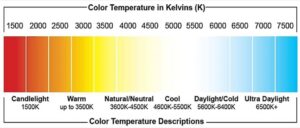
This article is just the tip of the iceberg when it comes to lighting considerations. There is no need to be overwhelmed by all of this. Our team has received training in lighting design and specification and can help with your project!
Allrounder Remodeling Inc. provides residential home design and remodeling services in the southeast Twin Cities metro area, including the cities of Apple Valley, Rosemount, Eagan, Mendota Heights, Sunfish Lake, West St. Paul, South St. Paul, Inver Grove Heights, Cottage Grove, Newport, St. Paul Park, Woodbury, Oakdale, and Maplewood.
For more information, please call 651-497-7715 or 651-497-7714; or visit https://www.AllrounderRemodeling.com










